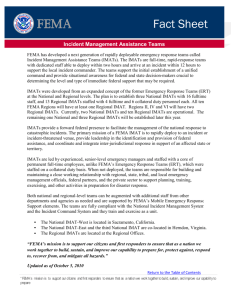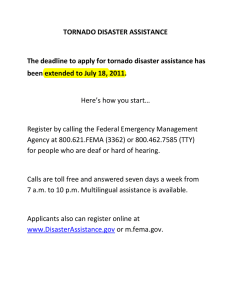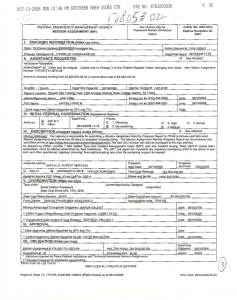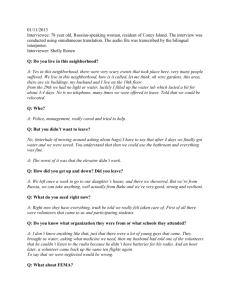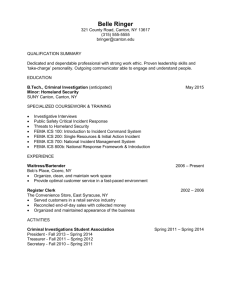ALL HAZARDS IN-BRIEFING CHECKLIST WELCOME
advertisement
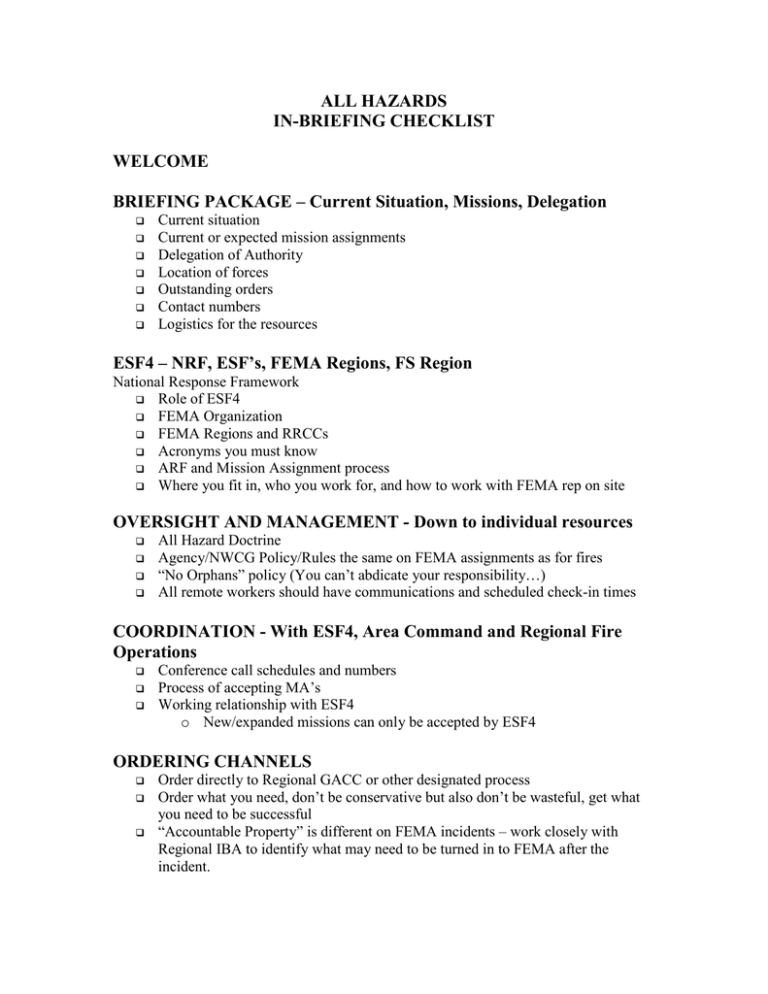
ALL HAZARDS IN-BRIEFING CHECKLIST WELCOME BRIEFING PACKAGE – Current Situation, Missions, Delegation Current situation Current or expected mission assignments Delegation of Authority Location of forces Outstanding orders Contact numbers Logistics for the resources ESF4 – NRF, ESF’s, FEMA Regions, FS Region National Response Framework Role of ESF4 FEMA Organization FEMA Regions and RRCCs Acronyms you must know ARF and Mission Assignment process Where you fit in, who you work for, and how to work with FEMA rep on site OVERSIGHT AND MANAGEMENT - Down to individual resources All Hazard Doctrine Agency/NWCG Policy/Rules the same on FEMA assignments as for fires “No Orphans” policy (You can’t abdicate your responsibility…) All remote workers should have communications and scheduled check-in times COORDINATION - With ESF4, Area Command and Regional Fire Operations Conference call schedules and numbers Process of accepting MA’s Working relationship with ESF4 o New/expanded missions can only be accepted by ESF4 ORDERING CHANNELS Order directly to Regional GACC or other designated process Order what you need, don’t be conservative but also don’t be wasteful, get what you need to be successful “Accountable Property” is different on FEMA incidents – work closely with Regional IBA to identify what may need to be turned in to FEMA after the incident. SAFETY – Develop an evacuation or sheltering plan for the next storm Lightning– use the 5 second rule, seek shelter in buildings or in a vehicle early Water – stay out of it, stay off of it, and don’t drive through it. Rinse off/ decontaminate if at all possible after exposure Security – order security personnel as needed, protect your personnel, disengage and move to safety as needed Make sure all personnel know and understand emergency procedures CONFERENCE CALLS - Area Command/Incident Commanders and ESF4 Daily calls o Time and number INFORMATION SHARING – You can tell others what you are doing. Be very careful not to comment about other or overall operations, just what you have been asked to do. Ensure your PIO is tied in with FEMA Joint Information Center (JIC) All office press releases need to go thru FEMA, who will coordinate with the State. Remember, it’s their incident; we’re supporting them. INCIDENT BUSINESS AND DOCUMENTATION – Follow Chapter 90 of the IIBMH Complete standard incident business package Provide to Regional Operations at closeout Track costs and provide to ESF4 throughout incident Purchasing authority. o What can you purchase LESSONS LEARNED – AAR’s, Base Plans, How-to’s At closeout provide a base plan and key operating information for any permanent facility that you worked at Provide AAR to Regional ESF4 Coordinator Wear only PPE or team/agency uniform; do not wear clothing with logo from FEMA or other agencies you don’t work for PATIENCE AND FLEXIBILITY Great need for patience – people are stressed, both citizens and responders You must be flexible – disasters can have poor intel and inaccurate information Emergencies are fluid situations, you need to get on-site, assess the situation and report back. Always remember; “This is not a fire, and you are not in charge.” If you aren’t sure about something, ask your ESF4 contact
